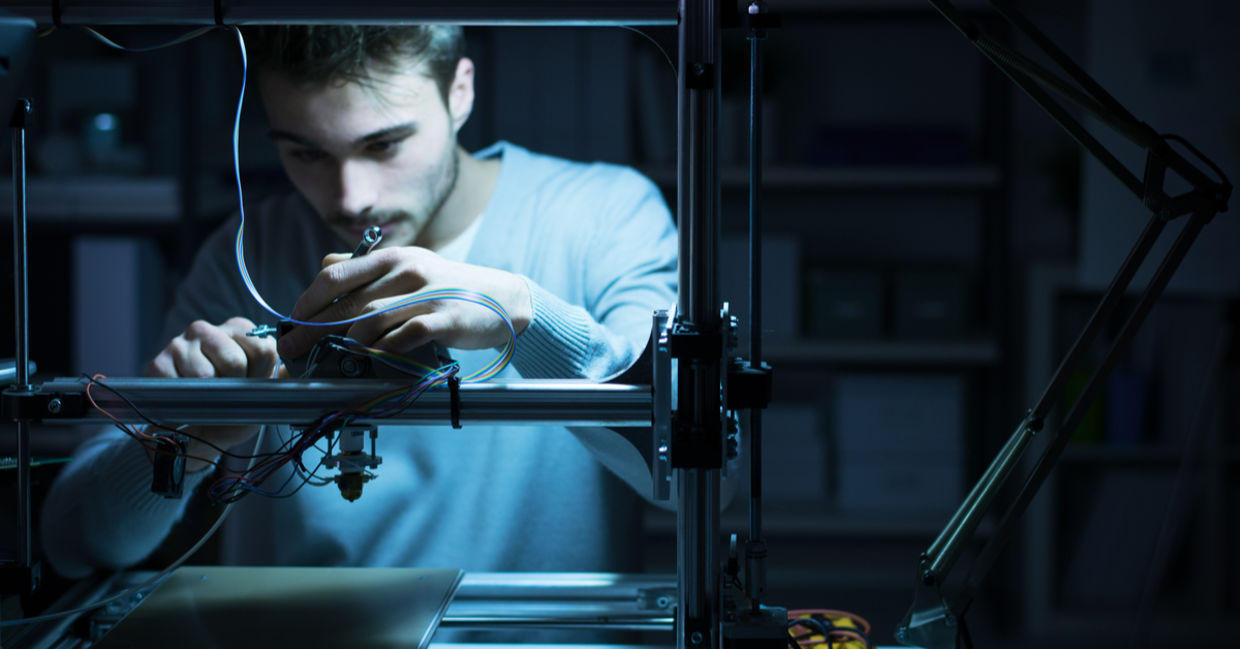
(Stock-Asso / Shutterstock.com)
Making Plastics from algae on a 3D printer may sound very futuristic but in a world where you can 3D print anything from houses to medical devices, it is anything but. Dutch designers, Eric Klarenbeek and Maartje Dros have made it a reality.
The two designers, both graduates of the Design Academy Eindhoven, developed a bioplastic made from algae which they believe can be used to replace synthetic plastics made from fossil fuels.
Klarenbeek and Dros cultivate algae which are then dried and processed into a polymer that can be used for 3D printing. They are among a host of designers (and commercial companies) that are using algae to create environmentally friendly products.
Why algae? Algae are freely available in nature; just check out a pond near you. Their best feature, however, is that the plants absorb CO2. Instead of simply being carbon neutral, plastic made from algae is actually carbon negative.
After researching the use of algae with Wageningen University, Salga Seaweeds, Avans Biobased Lab in the Netherlands, and other institutions for three years, Klarenbeek and Dros were asked to establish a research and algae production lab at Atelier Luma in the South of France.
The designers promote the use of local products so only local algae are used in both their design studio in Zaandam and their production lab in France.
Klarenbeek and Dros believe that the algae polymer could potentially be used to make virtually anything that is currently made from fossil fuels, from plastic tableware to shampoo bottles. The design studio's goal is to establish a local network of 3D polymer printers aptly called 3D Bakery where people can locally grow raw materials and produce what they need. They hope that this will become a reality within 10 years.
The duo didn't start with algae. They have created various biopolymers from other organic materials including mycelium (the substance in a fungus that grows mushrooms), potato starch, and cocoa beans. Klarenbeek began working with mycelium seven years ago and that led him to develop the first 3D printed chair from a live fungus.
They even partnered with an American company, Ecovative, and developed a commercial line of mycelium products called Krown. The DIY kits allow customers to grow their own lamps, tables, or biodegradable picnic items with a standard 3D printer.
The Dutch duo is far from the only ones to have discovered the fantastic abilities of algae. Another company using a similar technology is Algix, an American cleantech company. Algix harvests microalgae blooms that endanger fish and plant life and converts it into biodegradable filament to replace similar petroleum-based products. This pond-to-printer solution was developed in the US, China, and Jamaica and is now in use in 16 countries.
With more and more companies discovering the benefits of algae, a future where all plastic will be biodegradable and environmentally friendly is not too far off.
YOU MIGHT ALSO LIKE:
These Zero-Waste Plates Are Made Entirely From Leaves
5 Bio-Degradable Plastic Companies for a Greener Future
This Edible, Algae-Based Water Bottle Biodegrades Once Empty







